saving John Lewis
When southern governors refused to enforce Supreme Court decisions outlawing racial segregation in interstate commerce, a leading civil rights organization assembled an interracial group in May 1961 to travel on Greyhound and Trailways buses from Washington, DC, to New Orleans.
The bus trip would include stops at bus stations and restaurants which still followed local Jim Crow laws requiring racial segregation in their facilities.
The ride would be a direct challenge to Jim Crow laws, forcing local and federal law enforcement to choose whether to follow local custom or obey the law requiring desegregation.
The travelers included future Congressman John Lewis and the national press labeled the group the “Freedom Riders.”
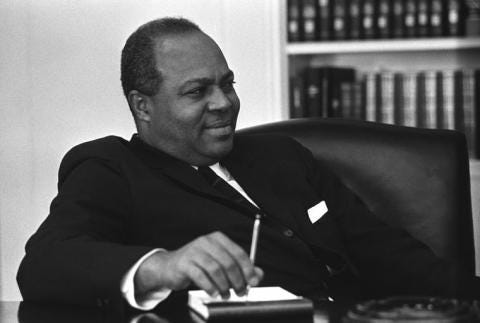
The Freedom Riders were attacked viciously on their journey and the federal government was forced to intervene.
The violence was at the hand of the Ku Klux Klan, who operated in collaboration with local police, and the worst occurred in Alabama.
In Anniston, a bus was set on fire, and in Birmingham, a white mob attacked the Freedom Riders inside the bus station.
In both cases, local Alabama law enforcement refused to intervene.
The Alabama governor called the Freedom Riders ‘outside agitators’ whose protection was beyond the capacity of state or local law enforcement.
"When you go somewhere looking for trouble, you usually find it...You just can't guarantee the safety of a fool and that's what these folks are, just fools.” — Governor John Patterson
The city of Montgomery, Alabama, the state capital, would prove to be a flashpoint.
Under pressure from the Kennedy Justice Department, the governor had agreed to authorize Alabama state troopers to accompany the Freedom Riders along the state highway to the Montgomery city limits.
The Montgomery city police would then assume responsibility for the Freedom Riders’ trip into the city.
But, as the bus neared the Montgomery city limits and the state troopers withdrew, there were no city police officers present.
The Montgomery public safety commissioner had secretly promised the local Ku Klux Klan they would have several minutes to attack the Freedom Riders without police interference when the bus arrived in town.
John Lewis describes the scene:
“It was the strangest feeling at the Montgomery bus station.
“You didn’t see any people.
“Just nothing.
“We started down the steps [of the bus].
“[Then] an angry mob, maybe 2,000 people with baseball bats, lead pipes and chains, rushed at us.
“I was hit on the head with a wooden crate, left lying in the street semiconscious.
“Most of the police just disappeared.”
As Floyd Mann, the head of the Alabama state troopers, waited in his vehicle on the outskirts of Montgomery, he heard police reports of the violent attack.
He raced to the bus station and ran into the riot with his gun drawn as the mob was striking a Freedom Rider with a club and shouting, "Kill him! Kill him!"
Mann stuck his revolver in the temple of a white man holding a baseball bat and said, “I’ll give ya folks five minutes to all clear out of here, or I’ll start shooting with this fellow and we will take names later for families.”
John Lewis describes the scene:
“Floyd Mann, the Alabama state patrol public safety director, came and stood over us.
“He fired his gun up in the air two, three times saying, ‘There’ll be no killing here today! There’ll be no killing here today!’”
Ten minutes later, the Montgomery city police arrived.
The police captain tried to force Mann to leave, claiming he had no authority within the city limits.
Then an Alabama state judge and the state attorney general arrived, and they read aloud a court order they had obtained which enjoined the Freedom Riders, who were now bloodied and laying on the ground, from entering the state of Alabama.
[It’s almost laughable.]
But Floyd Mann refused to leave the Freedom Riders.
He radioed his fellow state troopers waiting on the edge of town to come to the bus station and restore order.
And they did, transporting some of the wounded to hospitals when ambulances refused to do so.
Years later, John Lewis saw Floyd Mann again:
“A week ago, I saw Floyd for the first time since 1961...
“He walked up, shook my hand and gave me a hug.
“He said, ‘John Lewis, do you know who I am?’
“I said, ‘Yes, Mr. Mann.’
“He said, ‘I wanted to say congratulations. I’ve followed you all the years of your career.’
And John Lewis said, ‘Your saving my life made it possible.’”
******************************
I’ll see you tomorrow.
— Brenda





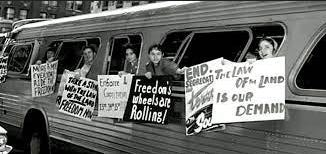
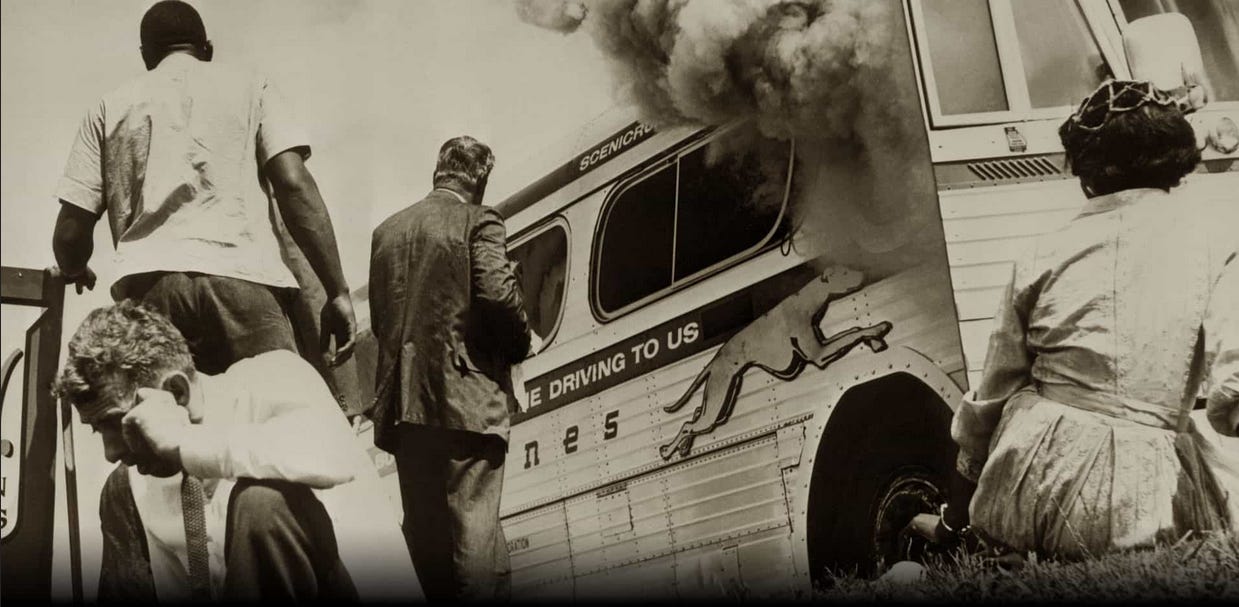
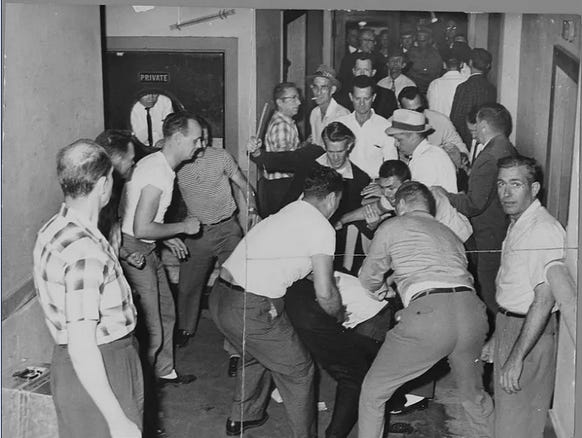
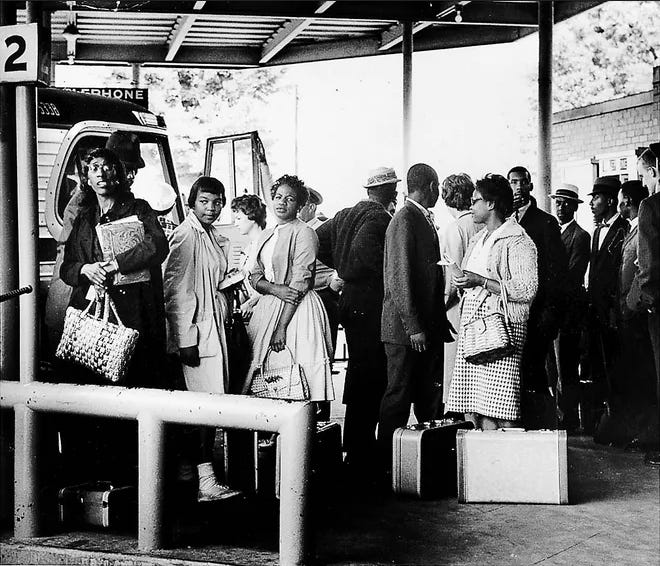
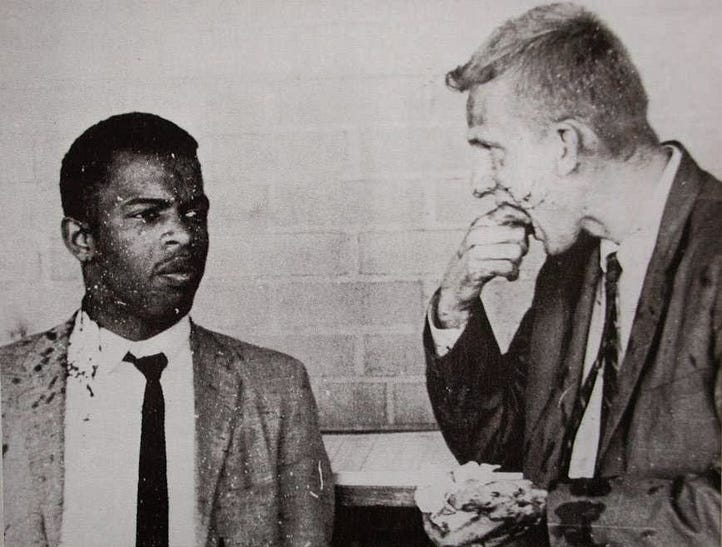

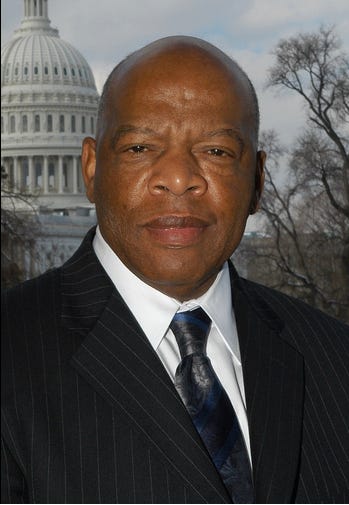


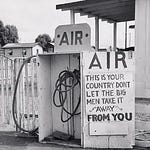
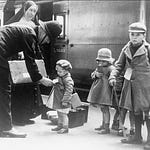
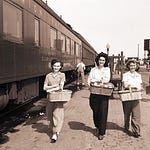

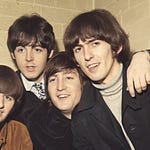
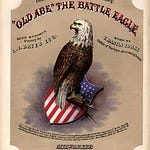

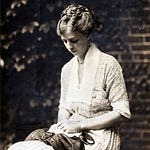
Photo of the Day